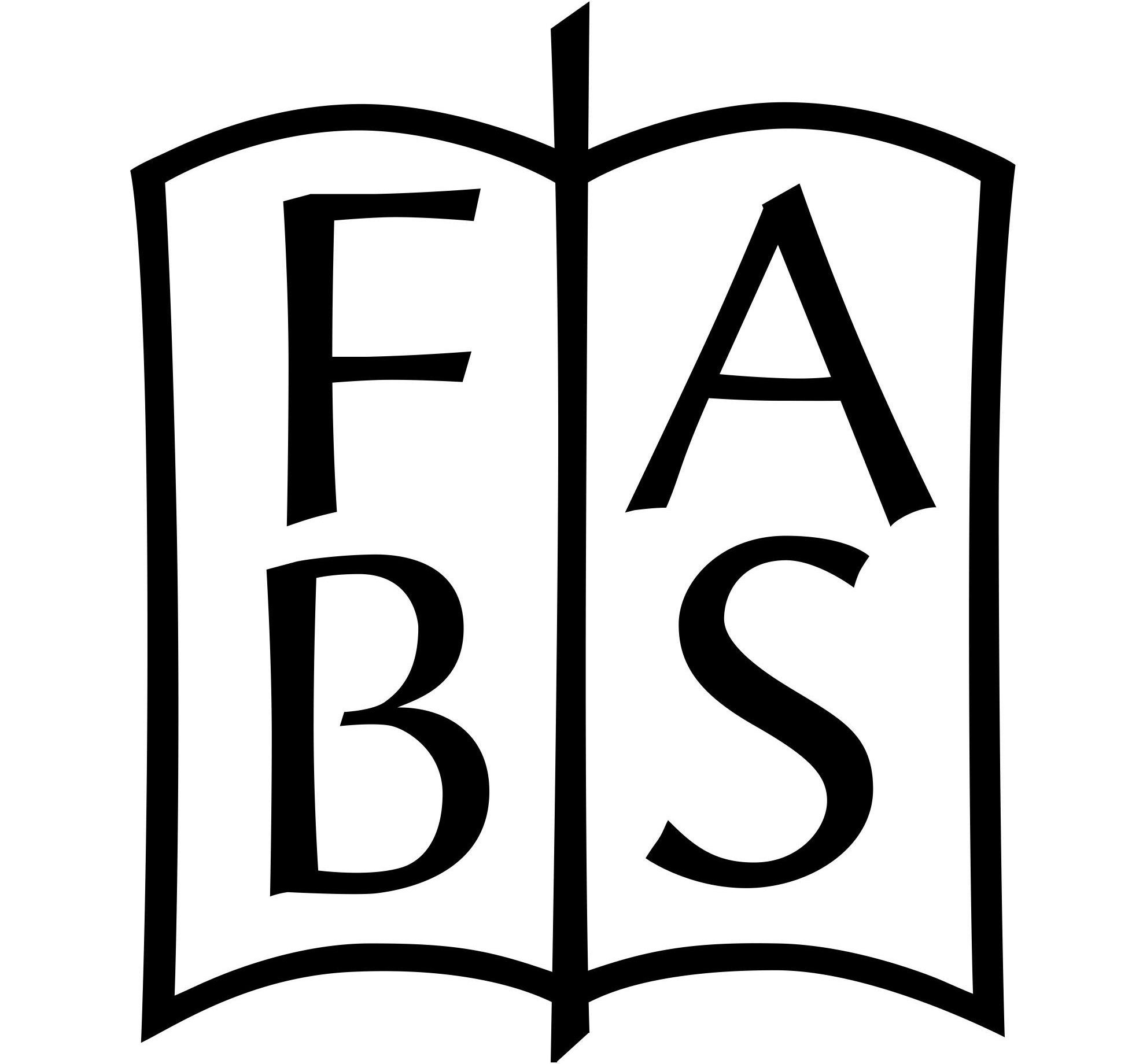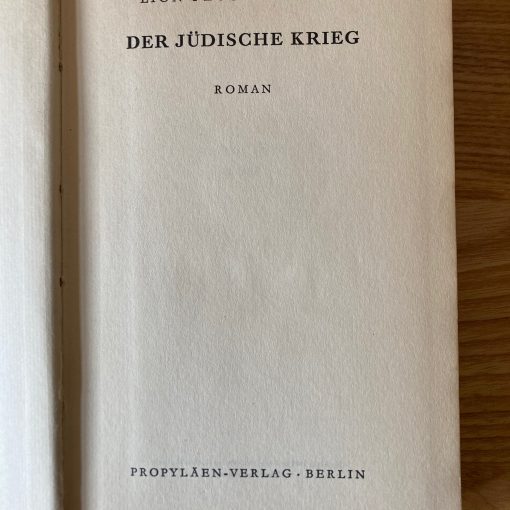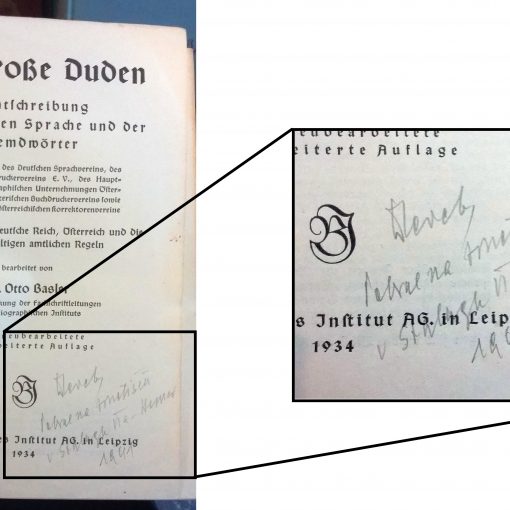by Kathy Roberts
I collected nineteenth-century decorated cloth bookbindings, or publishers trade bindings, for 25 years. All were octavo size or slightly smaller. In any case, they were full-sized books. My collection spanned early 1830s calendered cloth, 1840s striped, printed, and ribbon-embossed cloth, the brilliant reds and blues of the 1850s and the somber book covers of the 1860s, Victorian and Japonism influences, late nineteenth-century art nouveau, arts and crafts, and art deco style bindings of the early twentieth century.
In 1984, however, I had an epiphany, a life-altering event predicated by a simple careless collecting mistake. I had ordered a book online and remember walking down my icy driveway to retrieve it from my mailbox. The package was small, even tiny, and I became upset that the seller had sent the wrong book. I have a memory of audibly gasping when I unwrapped the layers of tissue and bubble wrap and held in the palm of my hand an exquisite 1840s cloth/gilt book measuring less than an inch-and-a-half in height. It was my first miniature book and it changed my book collecting trajectory forevermore. I realized that the same attributes that I searched for in octavo size could also be found in miniature (under three inches in the U.S. and four inches internationally). Hundreds of miniature cloth covers later, I have selected some from the 1870s and 1880s representing a time/specific design style termed Japonism. As you are reading and studying the following images, please remember that most of these are under four inches! Welcome to the world of miniature book collecting!
Collectors of nineteenth-century decorated cloth bindings often find it rewarding to organize their books by decade, reflecting historical changes such as the 1860s Civil War (subdued colors, less gilt) or the economic prosperity of the 1850’s with scarlet red and royal blue cloth predominating. The earlier decades of the 1830-40s feature examples of publishers’ experimentation with ribbon-embossed cloth (dress and milliner’s ribbon), striped and pre-printed cloth. The mechanization of book case production revolutionized bookmaking, which was formerly a one-at-a-time process involving the handwork of binders, engravers, and printers. The book case and accordingly, the rise of the publisher, democratized book ownership. Books rapidly went from being expensive luxury items of the upper classes, to objects marketed to factory and farm workers both by price and availability.
Cloth-covered book case production, in which many hundreds of books could be produced in an hour, consisted of an integrated one-piece front, rear cover and spine which was run through an embossing press, creating the design and spine title which then enclosed, or was wrapped around, the separately produced text block. The following illustrations show the components of case binding.

Image credit: https://digitalprint.bowerashton.org/book-binding.html
Binding101.com, Mallory Morsa, “What is Involved in Hardcover Book Binding 101” September 19, 2018.

Image credit: Bookbinding- Hardcover Book Anatomy, https://digitalprint.bowerashton.org/book-binding.html
Digital Print Technical Infrastructure, UWE Bristol University of the West of England.
In the photos below of the case of an 1843 Daily Food for Christians, which has separated from its text block, you can see the flat outer covers which have been run through an embossing press creating the impressed gilt design, and the inside photo of the case to which the text block was attached.


Material and design changes were at the forefront of industrialized book production, made possible by technological innovations, the growth of cities, and of a more literate society hungry for books. In the 1850s publishers became behemoths capable of producing many thousands of books per day – they were capitalists of the first degree. This was “mass production” – “production for the masses.” Their mission was to sell books. And this required designing appealing, fashionable books – which were often shelved face-out to the prospective buyer.
This brings us to Japonism, or Japonisme in its original French. For the book collector, this is a rich and fascinating area to collect – in terms of both its history and artistic influences. For much of the 1870s and 1880s, Japonism was the consummate consumer demand – people simply couldn’t get enough of it!
In the sixteenth and seventeenth centuries, Japan had an active economic trade with the Dutch, the Spanish, and the Portuguese, but the Japanese grew wary of what they considered unfair trading practices and became infuriated by the Europeans’ unrelenting desire to convert the Japanese to Christianity, often leaving priests and missionaries ashore as their loaded frigates sailed west. Finally, in 1639, the Japanese closed their waters and borders to European trade. For 200 years, during the time of the Shoguns and Imperial warfare, Japan remained “closed.” That changed, however, in 1853 when the American Commodore Matthew Perry sailed into Tokyo Bay seeking to restore diplomatic relations, and ultimately, the resumption of trade. The success of Perry’s mission opened the market of Japan’s goods (silks, pottery, porcelain, metalware, paperware, and ukiyo-e (block-printed illustrations of the floating world) to Western society. The resulting craze for everything Japanese was termed “Japonisme,” a word coined in France, but quickly adopted throughout Europe and America.
It is important to remember that no one living in the West had ever experienced Japanese products or design. For over two centuries, or ten generations, their art, food, clothing, dress, etc. had vanished from the world stage. Then suddenly it filled the ships returning from this unfamiliar, exotic land. The result was overwhelming demand, first prominent in France, where the Parisian artists were exposed to hundreds of boldly colored inexpensive Japanese block prints or ukiyo-e. The prints were so common in Japan that they were first used to wrap the goods for shipping! Soon, however, they were marketed on their own. They quickly became the subject of obsession and study by many painters we have come to know as Impressionists: Degas, Van Gogh, Manet, Monet, Bonnard, Gaugin, Cassat, Whistler.
Characterized by design styles of flat planes, asymmetrical and diagonal design, bold colors, and strong lines, the Japanese aesthetic dominated consumer production for over two decades, and this was especially true in America where wallpaper, home textiles, fashion design and fabrics, pottery, paintings, and books became purveyors of the Asian sensibility. With books, the subject or content made no difference to the publisher – the public wanted Asian-influenced design and they would have it – thus fans, rising suns, water lilies, etc. adorned covers of Westerns, cookbooks, prayer books, animal husbandry, etc. with no regard for content appropriateness.
The motifs of fan shapes, kimonos, wall screens, water in all forms, mountains, branch and buds, flowers, flying birds, and rising and setting suns, are seen in book covers throughout the 1870s and 1880s. These are placed within asymmetrical and diagonal flat planes, and often included multi-surface patterning, familiarly known as crazy quilt design.
Three design styles of Japonism frequently used in book design are Diagonal design, Wrap-around-Bindings, and Asymmetry:
Diagonal design. Spine, title or cover designs are placed on a diagonal plane.
Wrap-around binding. The carry-over of the cover design to the spine and the rear cover. On many Asian-influenced book covers, the use of a “chop” enclosing the publisher’s initials is often used. These appeared on imported Asian prints, usually in a bottom corner, as a rectangle or oval with the artist’s name or symbol.
Asymmetry. “The state of two halves, sides, or parts that are not exactly the same in shape or size” (Cambridge Dictionary). Not having symmetry – not having equivalence, exactness, evenness. In book design, it refers to each half being different than the other.
In terms of book production techniques, two stamping processes rose to prominence during the decades of the 1870s and 1880s, which are often seen in books with Asian design: “silver” stamping and negative stamping:
Silver Stamping: The 1880s re-introduced the use of silver stamping in book cover design. Silver had been used in the earlier decades of the 1840s and 1850s, but was soon discontinued because of tarnishing and smudging. A new technology achieved by mixing recently patented aluminum with palladium, allowed for “silver” stamping, a design feature publishers then used to great effect.
Negative Stamping: The design or typography is achieved by not stamping the bookcloth in that specific area – thus the cloth color itself creates the image. To better understand, look at the two images below.
To better understand, look at the two images below. Marcus Ward and New York-based E.P. Dutton had a business arrangement where Dutton published Marcus Ward titles for the American market. These two gift books both have gilt floral embossing to covers of branches and flowers in a diagonal design and both use negative stamping to create their cover designs and titles, but with different results. In Bible Forget-Me-Nots, the gilt title and gilt background minus the branches and flowers is stamped over the green cloth, resulting in the green cloth creating the branch and flowers and the background of the title. In Bible Heartsease the reverse has happened. The gilt flowers and title rectangle are stamped over the blue cloth, resulting in the title being the blue book cloth with the background in gilt.


Bible Forget-Me-Nots: A Daily Text-Book of Divine Promises. New York, E.P. Dutton. ca. 1885. 2 7/8 x 2 15/16 inches.
Bible Heartsease: A Daily Text-Book of Comfort and Rest. London, Marcus Ward, ca. 1885. 2 7/8 x 2 15/16 inches.
In the rest of this essay, I give additional examples of Japonism in miniature book design. Enjoy!

Living Waters: A Bible Textbook. E.P. Dutton, 1885. 3 3/8 x 3 1/4 inches.
This is a gift book bound in red cloth with silver and black stamping with numerous Asian motifs: cattails, a rising sun, water lilies, and the enclosed publisher’s symbol of “EPD” used on the rear cover as a “chop.” The use of negative stamping to form the image, in which the cloth is unstamped, revealing the cloth color, creates the title typography, the sun’s rays, and notably the fine lines of the horizontal waters and the vertical “falling waters.” The book contains Bible verses for each morning and evening of the month with the theme of water in text and illustrations.


Toasts and Sentiments, Ball-Room Companion, Etiquette for Ladies. Routledge’s Miniature Library. George Routledge and Sons, London and New York. Undated, circa 1880’s. 96 x 70mm; 3.3/4 x 2 3/4 inches.
These three pocket etiquette books are bound in uniform bindings with Asian-inspired stamping in black and silver. Cover titles are stamped in silver within a fan-shaped black and silver banner. The banner is asymmetrical, with the right side extending off the edge of the book. “Routledge’s Miniature Library” is stamped to top of the covers. The rear cover is stamped in black in an Asian-style leaf and flower design, featuring a “chop” hanging ornament with the initials of the publisher, “GRS.” The spine is undecorated, as is typical for flexible cloth.

Snow Drops: A Selection of Scripture Texts for Morning and Evening. J.E. Hawkins and E.P. Dutton, London and New York, circa 1880s. 3 ¼ x 2 ¼ inches.
This gift book is bound in pale blue cloth stamped in maroon and silver. The asymmetrical Asian-inspired design places the flowers on the left side and the title on the right.

Daily Food for Christians: Being A Promise and Another Scriptural Portion. American Tract Society. Undated, circa 1880s. 3 3/4 x 2 3/4 inches.
Daily Food for Christians was a hugely popular devotional in the nineteenth century, consisting of scripture and hymn extracts for each day of the year. The miniature version was often presented as a gift. This copy is bound in bright red cloth with attractive Asian-influenced gilt stamped arcing floral spray to one side of front cover, and the title on the opposite side. The design illustrates the Japonism aesthetic of asymmetry. Note in the top left corner a separate patterned panel design.


Daily Food for Christians: Being A Promise and Another Scriptural Portion for Every Day in the Year Together with the Verse of a Hymn. Thomas Y Crowell & Co., 1870s. 2 1/4 x 3 1/2 inches.
Here are five copies of Daily Food for Christians printed ca. the 1870s. These are excellent examples of asymmetrical Asian-influenced design issued in a uniform binding. Bound in various cloth colors with blind stamped diagonal floral design, these copies have a negative stamped title in a gilt block to the center of the front board. The spines have a gilt block title with elaborate gilt floral decoration on the diagonal. Note: Usually the publisher of Daily Food is the American Tract Society but these copies are exceptions.


Daisies From the Psalms: A Garland of Words in Season. London, James E. Hawkins. ca. 1870s. 3 6/16 x 3 3/16 inches.
Two wrap-around crazy-quilt style bindings from the 1880’s in tan and green cloth have the design elements of Asian-inspired covers, with different textures and patterns diagonally stamped in dark green ink, highlighted with gilt or silver within a central large oval.


Daisies From the Psalms: A Garland of Words in Season. London, James E. Hawkins. ca. 1870s. 3 6/16 x 3 3/16 inches.
Etiquette For Ladies. Warne’s Bijou Books. Frederick Warne and Co., ca. 1870s. 2 3/4 x 3 3/4 inches.
These two books are bound in classic 1870s dark green, the predominant color of the decade. Compare the spare and elegant design of this earlier Daisies with the above 1880s busy crazy quilt wrap-around diagonal design. Yet all three Daisies have identical printed texts and illustrations printed in red, yellow, and green with bordered text surrounded by flowers, including daisies, on every page. All have identical checkered endpapers printed in yellow, green, and white with a daisy within each square. Publishers often did this with gift books, sometimes leaving the text and illustrations unchanged for decades, replacing only the cover designs to market the book in the current fashion.
So we have three copies of the same book published in different decades by different publishers with very different Asian-inspired cover designs. The 1870s Daisies, stamped in black and gilt, has a fan shaped design placed in the left corner. Black stemmed gilt daisies rise from the right corner diagonally and upward.
Note the binding similarity of Warne’s Etiquette for Ladies, also published in the 1870s in the same dark green cloth color and also stamped in black and gilt. Delicate branches are stamped in black on a diagonal. Gilt cover titles with exaggerated decorated initial letters reflect a definite Victorian influence – a merging of two design sensibilities often seen in the 1870s.

The Longfellow Birthday Book. London, George Routledge and Sons, 1882. 4 5/16 x 3 inches.
Published as a Christmas or New Year’s Gift book, this volume has space for the recipient to enter the birth, and often the death dates of friends and family. This copy had been handed down over three generations, with dates entered over sixty years. It is bound in bright red cloth with black stamping employing Asian stylistic design and features. There is a wide gold title band to the spine. The diagonal cover title is stamped in gilt and outlined in black. “Life is Real, Life is Earnest” is stamped in gilt and unfurls from a scroll containing stems of bamboo and flowers. The publisher’s monogram of “GRS” is stamped in black to the rear cover.

Edmund Evans. The Illuminated Scripture Text Book With Interleaved Diary For Memoranda And A Coloured Illustration For Every Day. London, Frederick Warne and Co., 1880. 4 ¼ x 2 ¾ inches.
This book with richly decorated covers and spine uses several Asian motifs in its design. Negative stamping in darker brown ink creates the fan shapes forming the top border and the ceramic jardiniere with the climbing plant. Negative stamping using gilt also creates the title, with the light brown book cloth forming the title.

Three books from a Boxed Set of Six Titles: Cheery Lays for Dreary Days, Suggestive Thoughts for Meditative Minds, God’s Greetings in Nature. London, Walter Scott, ca. 1885. 3.5 x 2.5 inches.

This rare complete set of gift books would have been presented to a woman at Christmas, her birthday, or another holiday. The set is known for their densely gilded cover designs representing the height of Victorian decorated cloth bindings. The merging of Victorian and Asian-influenced design can be seen clearly in these three book designs. Note the use of fan shapes in the corners, asymmetrical floral sprays, potted plants, diagonal sun rays, round medallions, and the dense patterning of the crazy quilt God’s Greetings. Sixteen titles were originally issued in this series and individual titles sold for a sixpence.

Bijou Thoughts for Busy Moments is a fourth title from the above set in which the entire design and title are created with the use of negative stamping. The underlying blue cloth forms the design where the image has been carved out of the stamp, rather than raised. The result is overall gilt in which the design is revealed in the cloth color. Note the jardiniere with rising vine on a diagonal plane and the two round medallions.
That’s it! Hopefully you have enjoyed this art history/design exploration of Japonism in the 1870s-1880s, and most importantly, have a better appreciation of the beauty of nineteenth-century miniature cloth bookbindings.
Editor’s Note: This article originally appeared in the Miniature Book Society Newsletter, No. 126, February 2025.
Kathy Roberts is a former academic and public librarian, university professor, antiquarian bookseller, and lifelong book collector. In 2015 she donated her collection of over 500 nineteenth-century decorated cloth bindings to the American Bookbinders Museum in San Francisco. Fortuitously, that was also the year she attended her first Miniature Book Society Conclave. She now collects miniature and small format books exclusively. She is the current Vice President of the Miniature Book Society and serves as assistant editor and feature writer of the MBS Newsletter. She is a member of the Book Club of California and the Vermont Antiquarian Booksellers Association. She resides in Vermont with her husband, Tom.




